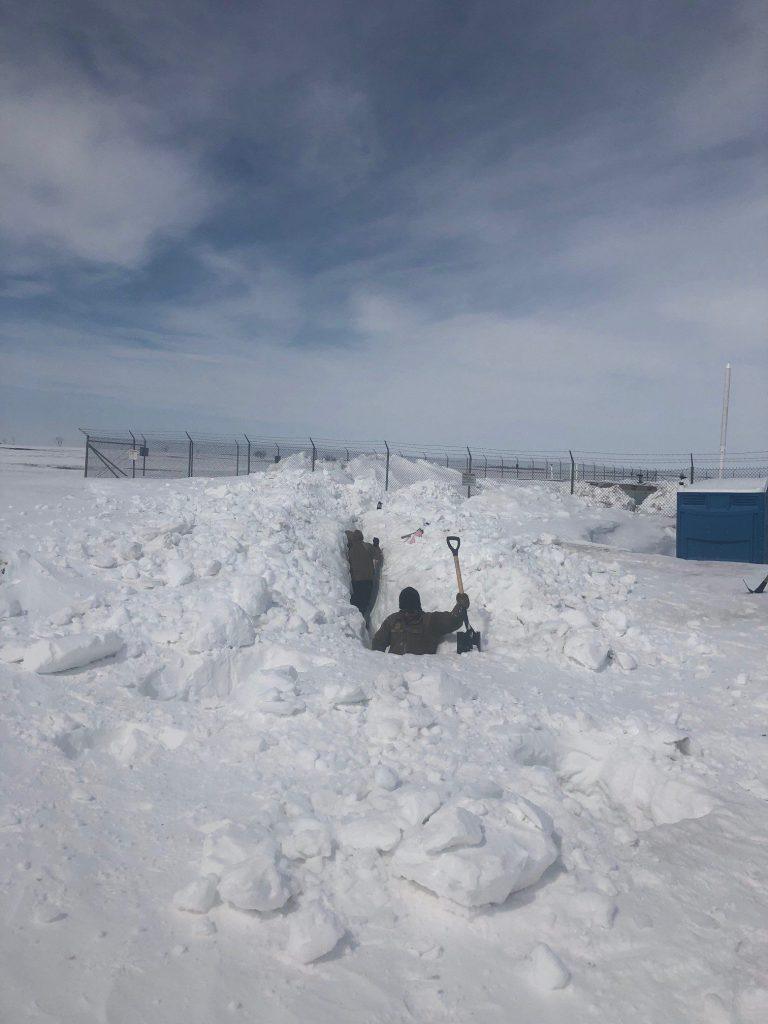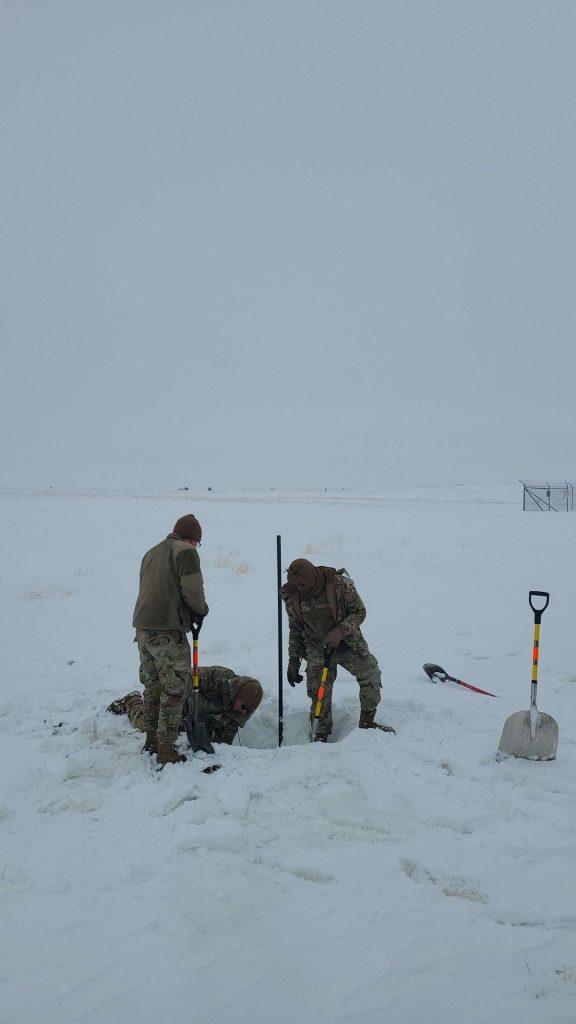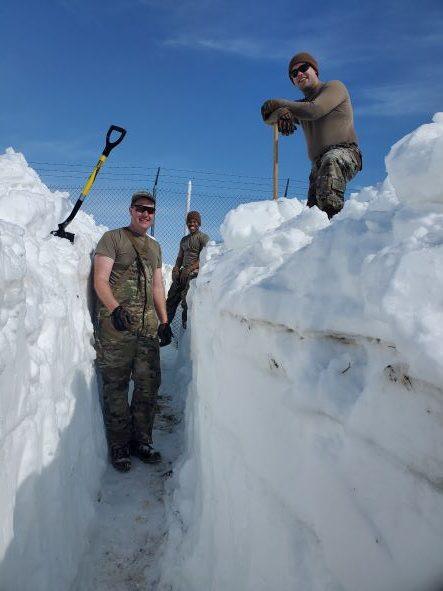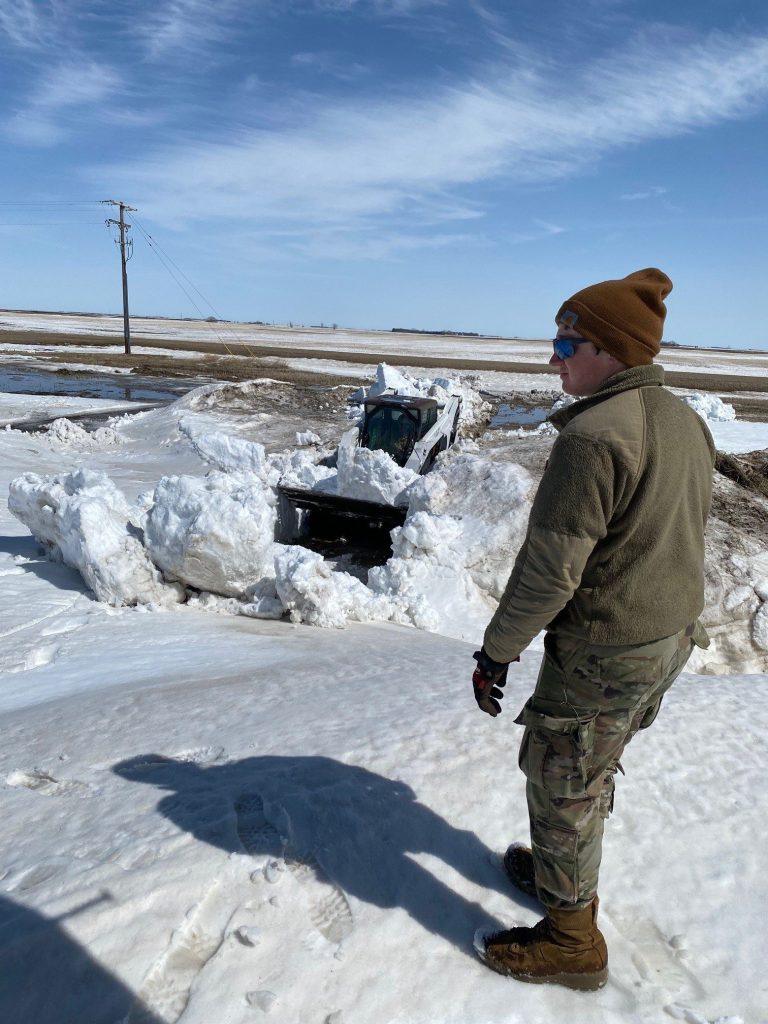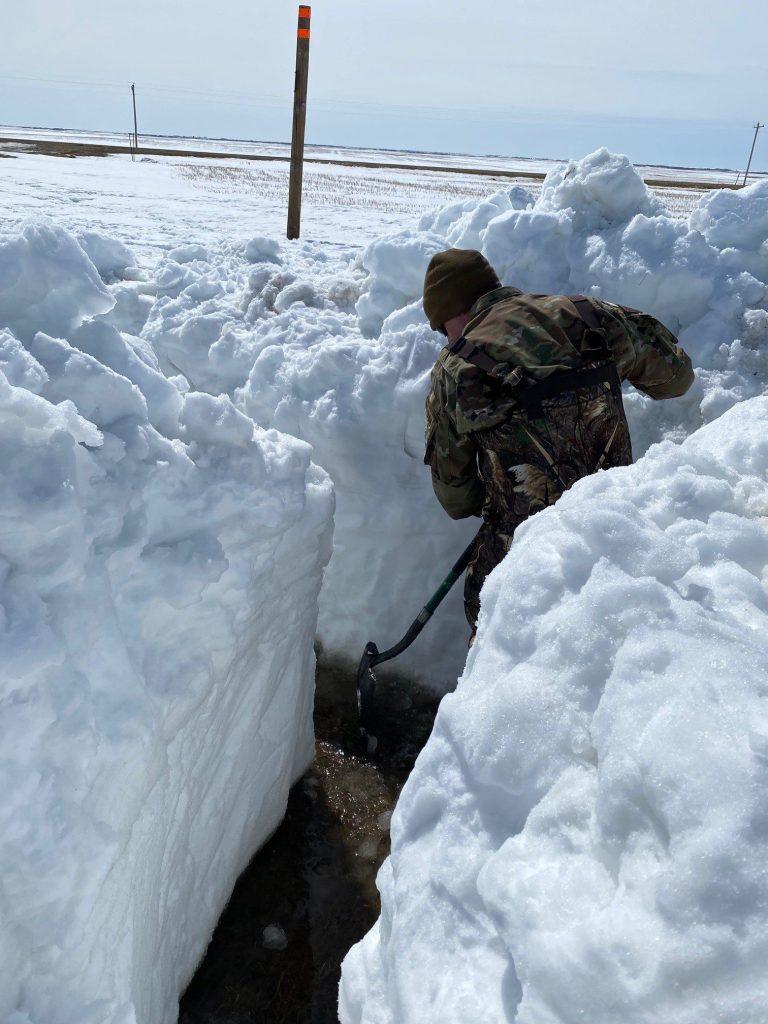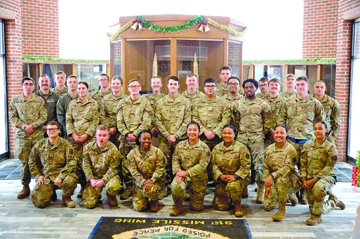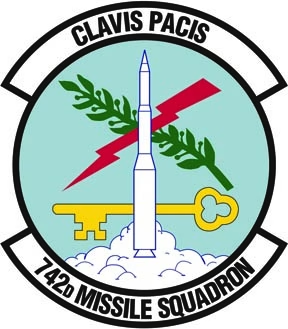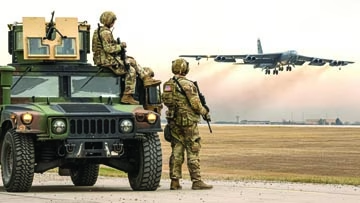On 5 April, as most of North Dakota looked forward to quickly rising temperatures taking the area in to the 50s and 60s, the men and women of 91st Missile Wing had a very different take: concern. North Dakota is prone to cold weather, heavy snow and high winds. These factors serve to create large snow drifts across the state that bury ICBM Launch Facilities under seven feet or more of snow. When temperatures rise too quickly, the snow melts before the ground does creating lakes across North Dakota. If left unaddressed these temporary lakes can flood Launch Facilities, causing millions of dollars in damage and affect readiness.
To prevent this from occurring, the 91st Missile Wing teams up with the 5th Civil Engineer Squadron, and spends a large portion of Winter clearing snow and creating trenches across 150 Launch Facilities. This year’s late season snowfall and rapid warmup refilled many of those trenches, forcing a rapid response to retrench the 150 Launch Facilities in just 4 days. Every year, Mother Nature tests the mettle of the 91st Missile Wing and can overwhelm younger airmen.
“It’s hard, especially as a team chief… you have to stop thinking about yourself and just be motivated for your team members to see, because it (trenching) can feel useless,” said SrA Noah Cox.
The task is challenging, but this was not the first time the 91st Missile Wing and 5th Civil Engineer Squadron had to pull together to protect America’s Strategic Deterrent.
“Until you live through one, you don’t have a true appreciation of how much work, how much coordination and how much comradery it takes to accomplish the daunting task of flood control,” stated TSgt Danielle Ellis.
As Day 1 of the response began, over 240 personnel poured into the missile field with snow removal equipment support from the 5th Civil Engineer Squadron. The equipment was a huge help, but many locations still required shovels and pickaxes due to the terrain or the softness of the ground. Working late into the night, and the following day, teams retrenched 101 Launch Facilities. Pictures and stories quickly emerged of digging through 8-foot walls of snow, ice, and slush to clear pathways for the flooding they knew was coming.
On Easter Sunday, as many celebrated the Holiday with their family, the 91st Missile Wing shifted focus. With the Launch Facilities most likely to flood trenched, Team Minot moved into the monitor and respond phase of the operation as temperatures climbed even higher. This phase of the operation is often the most concerning as water can quickly pool and then flood a Launch Facility. Previous hard work paid off as most water pooled away from the Launch Facilities. In a few areas growing pools of water were identified and teams were quickly dispatched to perform additional trenching.
“There was a thin layer (of snow) then 2 or 3 feet of slush. We had a pump going because it (the water) was going nowhere. We had waders, but you sweat so much you think they are leaking,” remarked SrA Noah Cox.
In addition, tractor trailers with sandbags were sent out to a couple Launch Facilities where teams could not get the water to drain. These teams established sandbag berms to further protect the Launch Facilities.
Throughout this operation, Team Minot was able to clear over 290,000 cubic feet of snow in just 4 days and averted any Minuteman III Missiles from being damaged by the rapid melt off. These efforts were not only crucial to the National Defense, but also served to epitomize that truly “Only the Best Come North”.
